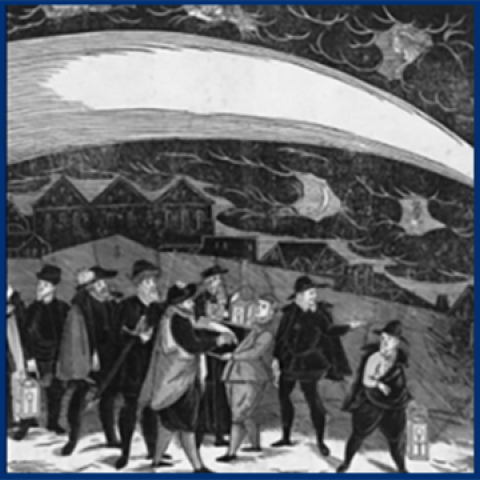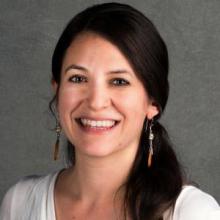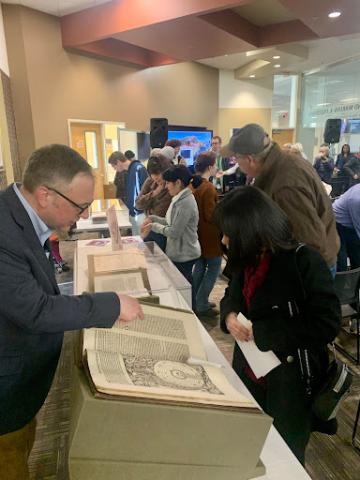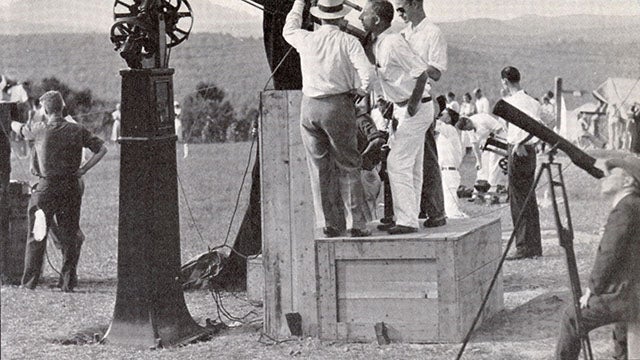On April 8, a total solar eclipse will pass over Case Western Reserve University and much of Northeast Ohio, completely blocking the sun for three to four minutes and darkening the daytime sky. The celestial phenomenon is sparking new interest in astronomy, and Kelvin Smith Library offers several resources and programming for those looking to learn more.
On March 21, the library hosted “Astronomy & Awe: A Historical Journey,” part of the Cleveland Humanities Festival (a recording will be online soon). College of Arts and Sciences Inaugural Dean’s Associate Professor Aviva Rothman shared a history of celestial phenomena and stories of the great thinkers such as Copernicus, Kepler, Galileo and Newton, who drew inspiration from them.
“These phenomena put these scientists on their paths and highlighted important shifts in thinking about the cosmos,” said Rothman.
Kelvin Smith Library is home to several rare books on the topic.
“We are fortunate to have a significant selection of historical works on astronomy including a 1489 Latin translation of an Arabic treatise—Abu Ma'shar al-Balkhi’s Introductorium in Astronomiam, Nicholaus Copernicus's De Revolutionibus, Johannes Kepler's Mysterium Cosmographicum, Galileo's Letters on Sunspots and 20th-century writings by George Ellery Hale and Albert Einstein,” said Special Collections Team Leader William Claspy. “One recent visitor from Dr. Rothman’s class said the time spent with these works was ‘transformative!’”
Rothman is also impressed with the collection.
“I take my students to the library nearly every semester to see these books because they are so incredible,” she said.
She hopes her talk—and attention to the eclipse and astronomy—help highlight the stories of the scientists.
“We tend to know that Newton discovered universal gravitation, or that Einstein came up with the theory of relativity, but not the sort of details of the process, how hard it was or what motivated it,” said Rothman. “Learning the details helps you see how things could have been different and just how contested these ideas were.”
Beyond the rare works, KSL Special Collections librarians also have curated a section of books dedicated to the eclipse. It’s where Rothman found an awe-inspiring description of an eclipse written in 1894 by Mabel Loomis Todd of an earlier event. Todd was one of Emily Dickinson’s publishers and the wife of an astronomer.
“I doubt if the effect of witnessing a total eclipse ever quite passes away. The impression is singularly vivid and quieting for days, and can never be wholly lost. A startling nearness to the gigantic forces of nature and their inconceivable operation seems to have been established. Personalities and towns and cities, and hates and jealousies…grow very small and very far away.”—Mabel Loomis Todd
You can read more of Todd’s observations in the book Total Eclipses of the Sun.
Rothman will be part of an eclipse panel discussion on April 8, and plans to watch it behind Kelvin Smith Library in Freiberger Field (wearing safe solar viewing glasses, of course).
University Archives holds several eclipse teaching tools such as glass lantern slides, a hand-crank model and more which staff archivists have highlighted through their research of previous eclipse events at the university. Records show that a group of faculty, graduate students, alumni and special guests made an expedition to Maine in 1932 to view the total solar eclipse on Aug. 31.





